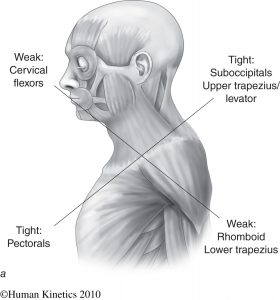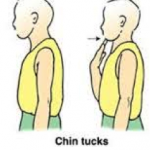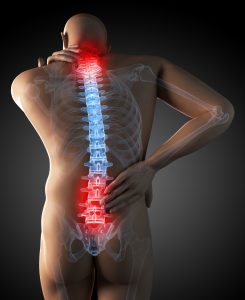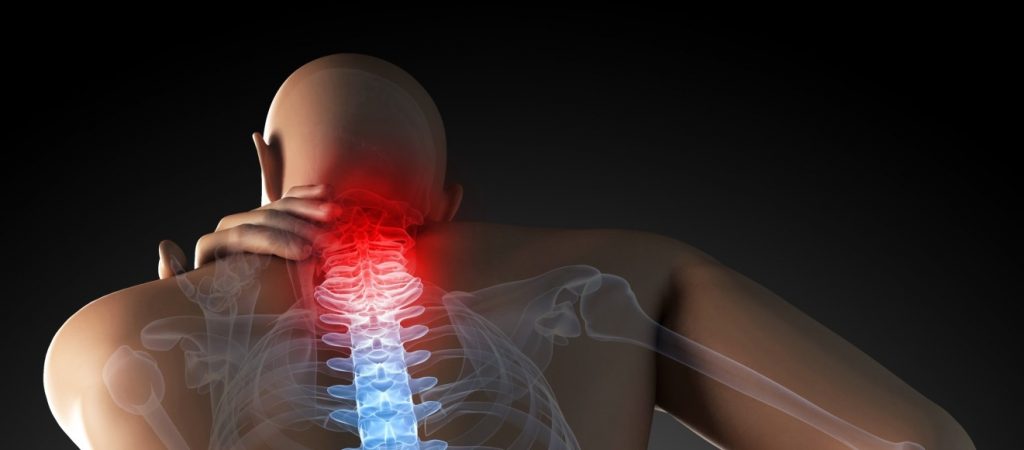Call today: 416-906-0767
Motor Vehicle Accident
Have you been in a Motor Vehicle Accident (MVA) as a driver, passenger, cyclist or pedestrian? You are automatically approved under the minor injury guideline for 12 weeks of chiropractic care. Don’t stress out about the process as I will assist you with documents. After you have spoken to your insurance company, let them know you will be seeking an assessment. They will issue you a claim number. You do not need to see one of the insurance companies turn-style high volume/busy clinic affiliates for physical treatment. Don’t wait to book your appointment with me, a trusted practitioner who offers comprehensive assessments and quality hands-on chiropractic care, soft tissues/muscle treatments, electro-therapy when warranted, rehabilitation and taping techniques. I offer a boutique style zen clinic space that is therapeutic and goal oriented to get you back up and running. Come to a trusted, safe space to assist you in your recovery.
Please email dr.mdavidovic@gmail.com or call 416-906-0767
Conveniently located at Yonge and Summerhill near transit and street parking all around.
Have you been in a car accident? Compassionate care is available here!
Have you been hurt in a car as a driver, passenger or as a cyclist or pedestrian? You are automatically eligible for 12 weeks of care under the Minor Injury Guideline. As a licensed provider, I can directly bill on your behalf to make the process smoother.
If you have a minor to major injury and are looking for an assessment to begin your claim, look no further. As a primary care provider, you may come to a chiropractor to start your treatment under the Minor Injury Guideline. After a car accident, please notify your insurance company so they can provide you with a claim number/file. If you have waited a while and are now noticing pain and require care, I can assist you with any forms you have received from your car insurance company. I am here to assist you in your healing and to make this process less stressful for you as the bundle of forms can seem overwhelming. Come to a trusted provider who will provide a safe and caring environment.
Benefits to coming to an independent chiropractor vs. rehab chain:
I offer quality care with ample treatment time in a beautiful, zen clinic space
I explain all diagnoses, treatment plans and recovery times with you
I offer a closed concept office space (compared to open concept health care settings seen in bigger chain rehab clinics where everyone is exercising together or overhearing each others conditions or treatments. I value your privacy and will do my best to ensure you are comfortable and feel secure
Dr. Maria Davidovic Chiropractic
1246 Yonge St. Suite 303
Toronto, ON M4T 1W5
dr.mdavidovic@gmail.com
416-906-0767
Been in a motor vehicle accident? Have Whiplash?
 Have you been in a motor vehicle accident as a driver, passenger, cyclist or pedestrian?
Have you been in a motor vehicle accident as a driver, passenger, cyclist or pedestrian?
Even if you haven’t felt immediate pain after a car accident, you may start to feel pain 24hours or even weeks post collision. Whiplash can present itself with minor, moderate or severe symptoms. It is very important to report the accident and seek appropriate care. If you have been in a car accident, you are automatically eligible for coverage under the Ministry of Injury Guidelines. Book your initial examination to ensure you recover and continue to lead your pre-accident life in a healthy state. I offer a caring environment with evidence based care and rehabilitation to assist in recovery.
Involved in a motor vehicle collision? call or email today to get the help you need and deserve.
call 416-906-0767 or email dr.mdavidovic@gmail.com to book your assessment now. Visit www.drmdchiropractic.com
Dr. Maria Davidovic Chiropractic
1246 Yonge St. Suite 303
Toronto, ON M4T 1W5
416-906-0767
dr.mdavidovic@gmail.com
Do you have neck pain? Here’s a simple neck core exercise to the rescue!
 Neck pain is quite common, especially with postural strain due to prolonged computer use, “text-neck“, injury or trauma to the neck etc. The postural strain sets us up for a weaker neck core. You’ve seen this rounded shoulders “slumped posture”. This posture involves tight pectoral muscles, tight suboccipitals (muscles at the base of the skull), upper traps and levators, stretched weak lower-trapezium/rhomboids, and right in the middle, a weak neck core.
Neck pain is quite common, especially with postural strain due to prolonged computer use, “text-neck“, injury or trauma to the neck etc. The postural strain sets us up for a weaker neck core. You’ve seen this rounded shoulders “slumped posture”. This posture involves tight pectoral muscles, tight suboccipitals (muscles at the base of the skull), upper traps and levators, stretched weak lower-trapezium/rhomboids, and right in the middle, a weak neck core.
Why is this bad? Well, this isn’t your ideal posture because your head and vertebrae shift forward and this imbalance places greater stress on your spine, ligaments, tendons, and muscles, predisposing you to pain and degenerative changes (arthritis).
How can chin tucks help?
Chin tucks are a way to re-activate the deep neck core flexors (longus capitis/colli muscles) that support your spine. When the neck core has endurance, it lasts longer to support the structures that help support your head, creating less muscle strain of the more superficial muscles like the upper traps.
Like with any exercise, there are progressions. You need to start out with the basics and then increase the level of difficulty/resistance. In this blog, we will start with a basic chin tuck. If you experience pain while attempting this, please email Dr. Maria Davidovic to arrange your initial chiropractic visit or follow-up to ensure you aren’t re-aggravating any underlying issue.
Chin tucks: Pull your head straight back keepings eyes and jaw leveled and hold for 5 seconds, then release. Do 10-15 repetitions slowly and you can do 2-3 sets per day.

If you would like to learn more about how to improve your posture, feel free to email dr.mdavidovic@gmail.com or call 416-906-0767 to arrange an appointment with Dr. Maria.
Spine friendly tools that help prevent pain
 Want to learn how to offset muscular, neck and back pain whether you’re at home, in the office or sitting on a bus/plane? Here are a list of simple, inexpensive devices to have with you, at home, or even in your luggage:
Want to learn how to offset muscular, neck and back pain whether you’re at home, in the office or sitting on a bus/plane? Here are a list of simple, inexpensive devices to have with you, at home, or even in your luggage:
- A lacrosse ball or tennis ball
- A foam roller (small for convenience)
- A backvitalizer*
- A posture medic shoulder strap*
- A mat (yoga or regular)
- A good supportive pillow
- Good supportive shoes/orthotics*
The * denotes that these would require an assessment to ensure proper use.
If you’d like to learn how these can all provide you pain relief and help prevent future spine/muscle related pain, feel free to contact Dr. Maria Davidovic, a Toronto Chiropractor, to book your initial visit or follow-up appointment.
Do you have mechanical neck pain?
 Neck pain has become increasingly common in that 2 out of 3 people will experience neck pain at some point. Mechanical neck pain and headache coming from the neck (cervicogenic headache) are quite common, so here is some info for you to help you further understand the relationship between spinal manipulation therapy (SMT) or the “adjustment” and decreasing neck pain.
Neck pain has become increasingly common in that 2 out of 3 people will experience neck pain at some point. Mechanical neck pain and headache coming from the neck (cervicogenic headache) are quite common, so here is some info for you to help you further understand the relationship between spinal manipulation therapy (SMT) or the “adjustment” and decreasing neck pain.
What does Mechanical neck pain mean?
Mechanical neck pain (MNP) just means neck pain that gets worse when we use our neck more and the pain is coming from parts of the cervical spine that allow us to move our head around and up and down. Mechanical neck pain doesn’t come from “pinched” or irritated nerves, instead the pain is coming from inflamed facet joints (joints in the neck) and from degenerated or “thinned” disc(s). The disc and facet joints become more inflamed when we use our neck to move our head, and the muscles around the cervical spine begin to spasm. You can think of a muscle spasm similar to a muscle cramp.
Why is the muscle spasm happening?
Muscles that are cramping eventually lead to pain. The spasm occurs as the body’s response to try to stop the movement in the neck. Addressing the root cause of pain in the neck with an assessment of the painful cervical joints that may be “stuck” or restricted will assist in the application of treatment options. An adjustment or alternatively gentle mobilizations (challenging a joint within its normal range) may effectively remove the pain source, which will allow the muscle spasm to subside.
Ways to keep the neck joints happy:
- Sleep with a supportive pillow on you side or back
- Make sure to stretch your neck regularly to avoid stiffness in the cervical spine
- Take computer/phone breaks to avoid looking in one direction for too long
- If you need more details on how to do the above or would like more tips, book an initial visit with Dr. Maria Davidovic
If you’d like to arrange an appointment, email dr.mdavidovic@gmail.com or call 416-906-0767
“Text-neck” concerns? A modern spine condition affecting growing children, teens, and adults
 What is text-neck?
What is text-neck?
It’s neck pain associated with looking down at your cell phone or other wireless device for too long and too frequently. This posture of bending your neck to look down over the cell phone isn’t a new position. We have been hunching over for years with reading also. The main issue is that we look down for longer periods of time and more frequently in this day and age. What’s most concerning is that this posture is especially common in children! This could be setting them up for lifelong neck related damage and pain.
What are common symptoms of text-neck?
Neck pain, tightness, soreness, muscle spasms, and pain in the shoulders. If a cervical nerve becomes pinched, it can also lead to nerve pain that travels down your arm into your hand (neurological symptoms for cervical radiculopathy.) Text neck may also bring upon early onset of arthritis. So what can we do to help decrease these above painful neck conditions?
Take frequent breaks every 20-30mins.
Make sure you set up your computer so it’s at eye level at the desk so you’re not looking down excessively.
Try to hold your phone up higher to avoid looking down for too long.
Stretch your neck side to side, roll your shoulders back and down (opposite of being hunched over).
You should strengthen the core muscles of your neck and shoulder blade area (scapular stabilizers). These areas are crucial to build endurance in so that you don’t slump forward as much and predispose yourself to other injuries secondary to poor posture.
To learn how to offset the harmful effects of “text-neck”, book your chiropractic appointment now at dr.mdavidovic@gmail.com or 416-906-0767 with Dr. Maria Davidovic.
December Newsletter 2014 *Happy Holidays*
Here is the link to the pdf newsletter: DEC2014PrintLetter
It’s that time of year AGAIN! With the hustle & bustle of the holiday season, don’t forget to take good care of your immune system with adequate rest, a good diet, exercise and throw in your chiropractic “tune-up” visits, and your spine and nervous system will be good to go! While for some, this season can be a pain in the neck, figuratively speaking, many others suffer from acute or chronic headaches stemming from the neck. Read below on how chiropractic care can help you or someone you know.
Research Review
Efficacy of Spinal Manipulative Therapy (SMT) and Cervicogenic Headache (HA).
Cervicogenic headache is a secondary complaint from a disorder within the cervical spine or soft tissues of the neck. It is pain referred to the head from joint structures in the upper cervical spine. Patients with headache are frequently treated with spinal manipulative therapy, which is moving a “stuck” or restricted joint beyond someone’s physiological range in order to restore normal, pain-free motion.
According to research, SMT is effective in reducing HA intensity, duration and medication intake, and may also help to decrease headache frequency in Cervicogenic HA patients.
In my practice, I utilize MANY therapeutic techniques such as, the aforementioned, spinal manipulative therapy, cervical mobilization, which is challenging a restricted or “stuck” joint within someone’s physiological range of motion, Graston Technique®, Muscle Release Therapy, Kinesiotaping, therapeutic exercise, acupuncture and thoracic spine manipulation, which is also effective in decreasing neck pain (see next page.)
If you are experiencing neck pain and headaches and are unsure as to why that is, call or email to book a free 15 min consultation to find out how Chiropractic Care can help you.
Thoracic SMT for cervical spine pain and HA
Because of biomechanical, anatomical and nerve relationships between the cervical and thoracic spine, disturbances in the thoracic spine could contribute to the maintenance of neck pain. Treatment directed at the thoracic spine may have hypoalgesic (a decreased sensitivity to pain) or biomechanical effects on the cervical spine.
Preliminary evidence suggests that thoracic spine SMT may result in an immediate decrease in pain and an increase in cervical range of motion in patients with mechanical neck pain. (Flynn et al, 2001)
In a controlled study (Cleland et al.), they demonstrated that patients with mechanical neck pain who received thoracic spine manipulation experienced a significant immediate improvement in neck pain as compared to a sham manipulation group. The results showed a clinically significant reduction in pain at rest in subjects with mechanical neck pain immediately and 48 hours following a thoracic SMT.
You can follow me on Twitter & Facebook where I will be re-posting a headache diary and some easy neck exercises/stretches. Here’s wishing you a safe, healthy and happy holiday season with all the best to come in the New Year! J
One of the best gifts you can give this holiday season to a friend, colleague, family member, or significant other is sharing your experience with chiropractic care and your health accomplishments in 2014.
Invite a friend to come in for a free 15 min Consultation to learn more about Chiropractic Care
Cesar Fernandez-de-las-Penas et al. (2007). Changes in Neck pain and active ROM after a single thoracic spine manipulation in subjects presenting with mechanical neck pain: a case series. JMPT, 30:4.
Fernandez-de-las-Penas, C et al. (2005). Spinal Manipulative Therapy in the Management of Cervicogenic Headache. Headache, 45:1260-1270

